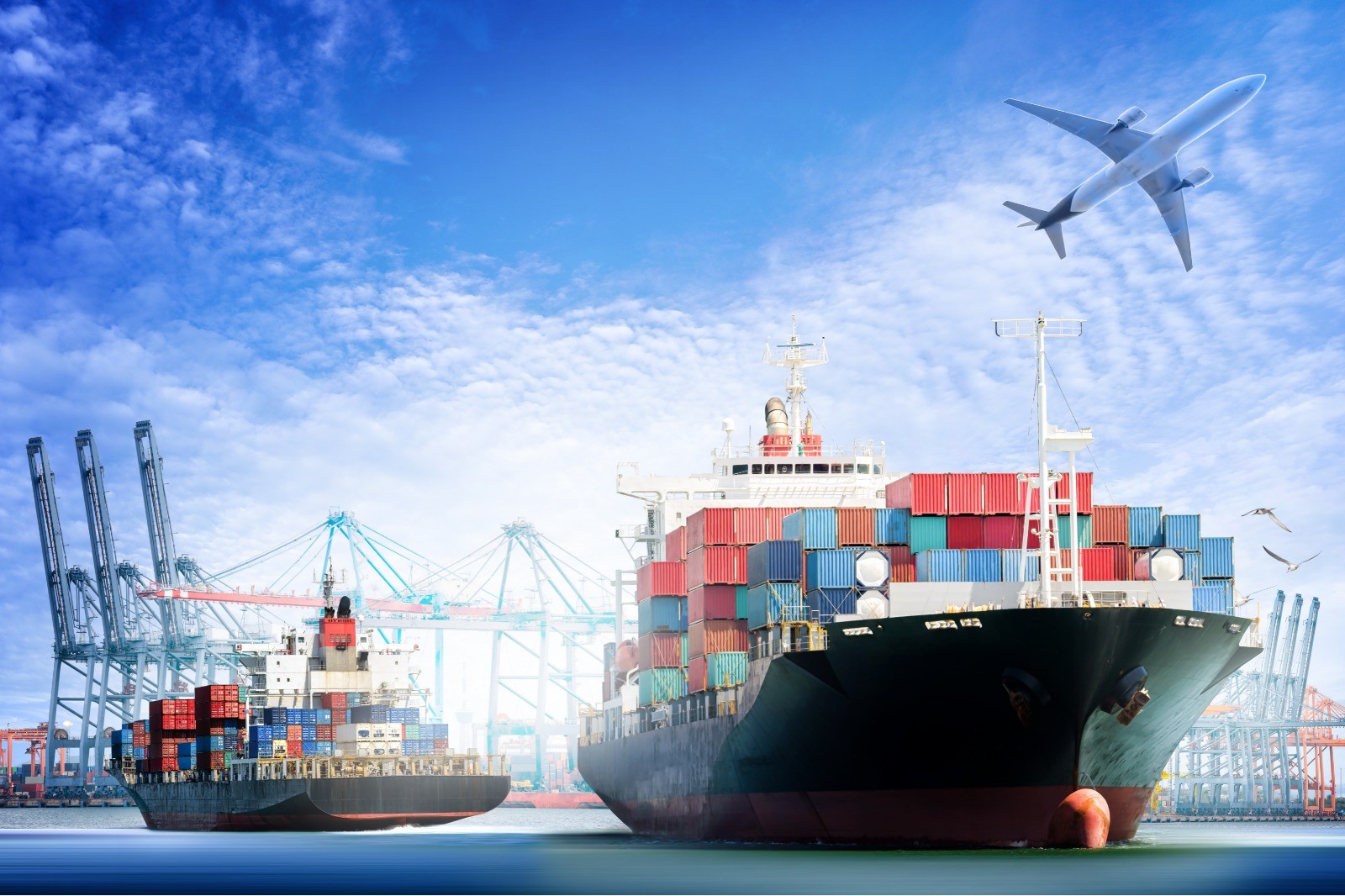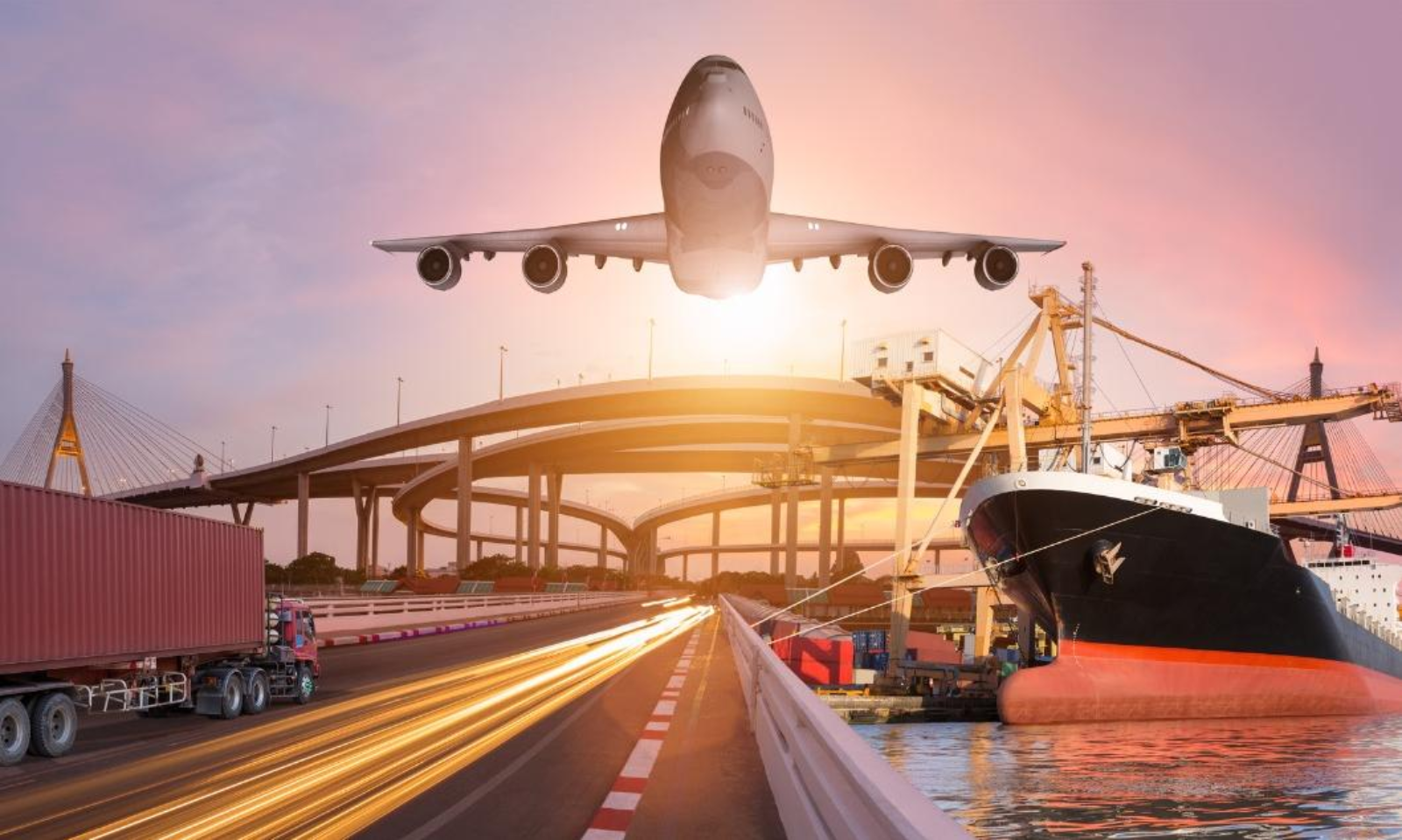Although each form of transportation has particular advantages, there are nevertheless drawbacks that have an impact on how commodities are transported. Consolidating the benefits of each mode of transport and limiting their inadequacies is one of the prerequisite values that make logistics providers consider exploiting this mode of transport. Let’s learn about some common multimodal transport in this article!
The definition of multimodal transport
International multimodal transport, commonly referred to as combined transport, is the process of moving commodities by at least two different modes of transportation from one location to another country.
The process of performing multimodal transport must be entirely on the basis of a contract. Multimodal transport typically combines two or more of the following modes:
- Air freight
- Ocean freight
- Road transport
- Railway transport
Features:
- Two or more means of transportation must be used in the transport process.
- The Multimodal Transport Operator (MTO) acts as a trustee and not as a shipper’s agent or a carrier’s agent involved in multimodal transport.
- The multimodal transport operator must be responsible for the goods during the entire transportation process (from the time the goods are received to the time the goods have arrived at the destination), including the delay in delivery at the destination. Thus, the MTO is responsible for the goods under a certain liability regime, which can be a uniform or leg-by-stage liability regime depending on the agreement of the two parties.
- In international multimodal transport, the place of receipt and delivery is in different countries.
Some common multimodal transport
Road – Rail Multimodal Transport
This combines the flexibility of road transportation (using trucks, containers, tank trucks, etc.) with the rapidity, safety, and weighty load of rail transportation. This form of multimodal transport was first born in the US and is called Piggyback.

In this method, the transport operator loads the trailers and delivers the goods to the station via the tractor. The trailers are then towed onto the train carriages and transported to the arrival station. Upon arrival, the tractor will be utilized to haul the trailers down so that they can be driven to the destination by road vehicles.
In particular, the road is in charge of gathering and distributing goods at both ends. And rail transport plays a major role in reducing the time it takes to transport goods.
Road – Air Multimodal Transport
Combine these two modes to take advantage of road maneuverability and aircraft speed. Road transport vehicles are used to convey cargo from the point of dispatch to the airport or from the airport to the delivery location.
Normally, trucking activities usually take place at the beginning and the end of this model. This combination is highly flexible, effectively meeting the collection of goods to the airport to serve long-distance flights.
Sea – Air Multimodal Transport
Combines economy with speed, suitable for high-value goods (electronics) and seasonal goods (clothes, shoes). This transportation is cheaper than by air and faster than by sea.

After being shipped by sea to the transshipment port, the goods will be swiftly moved inland. If delivering the commodities by another mode of transportation won’t guarantee their seasonality, would devalue them, or will harm them, then air transport can make effective use of speed and safety.
Rail/ Road/ Inland Waterway – Sea Multimodal Transport
This is the most popular form of multimodal transport today. It is applicable for shipping cargo over international borders by sea. In the process of transporting goods from the manufacturer to the seaport, it is necessary to apply a combination of other modes of transport such as road, rail, waterway…
This is the most common means of transport for importing and exporting goods, and it is appropriate for all types of cargo shipped in containers along shipping routes without a strict deadline for delivery or receipt.
Land Bridge
This type of multimodal transportation involves a means of rail or road that travels across a continent to reduce the distance and avoid crossing the sea. In this transport model, the land segment is likened to a bridge that connects two oceans.
Micro Bridge
Similar to Mini Bridge. The only difference is that the journey concludes at an industrial park, a domestic commercial center, rather than a seaport.
Demand for multimodal transport
- Increase the cost-effectiveness of freight operations.
- Standardize the process of transporting goods by containers, trailers, pallets, etc. to take advantage of the scale of transport units.
- Combining the use of different means of transport with different levels of environmental friendliness instead of using only one type of vehicle can have a significant negative impact on the natural environment (eg. old trucks).
- Globalize the trade and facilitate international supply chains.
- By balancing the proportion of travel between modes of transportation, the promotion of international trade activities encourages resolving the issue of overload for particular forms of transportation.

Benefits of multimodal transport
Both the national economy and international trade benefit greatly from this mode of transportation. The following are some of the main attributes that multimodal transportation brings:
- Reduce logistics costs & Just in time, thereby helping to reduce the cost of goods and production costs. Increase competitiveness in terms of price and quality of goods.
- Expanding the transport network and being highly economical: due to the combination of modes of transport, it is capable of transferring large volumes of goods, super-long and super-heavy goods.
- Assisting industrial and trading companies in gaining speedy access to the market, particularly the world economy, through a sizable and well-connected transportation network.
- Strengthen the government-business partnership and eliminate any paperwork that is not necessary for shipment.
The importance of freight transport methods is increasing in the contemporary era of economic integration. As a result, numerous new forms of transportation emerged to meet the demands of the goods trade. With the above knowledge, people will have a better understanding of and an overview of the multimodal transportation methods.


